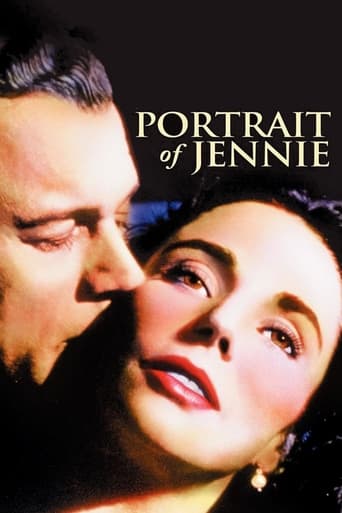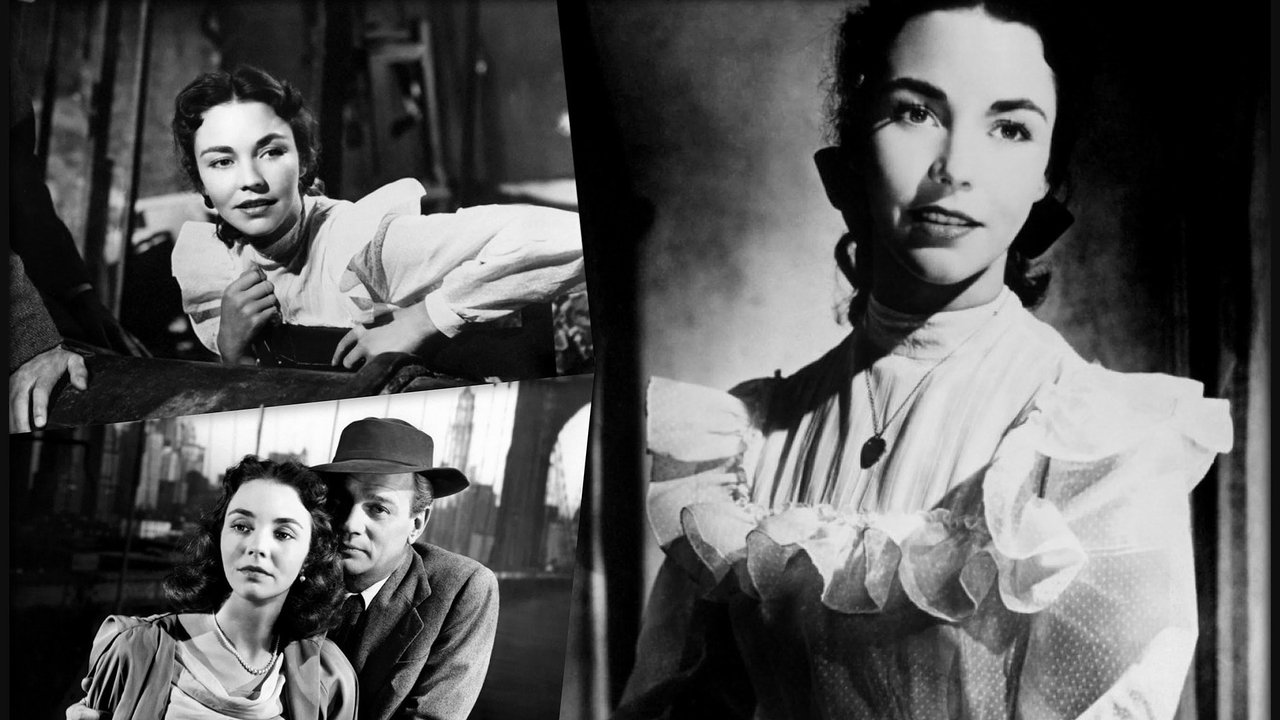Kieran Wright
Sometimes one happens upon a film which one wouldn't have even known about unless it is found by accident. This, for me, is one of those films and I couldn't be happier to have found it. Having done a little research on the actor Joseph Cotten, he is on the record as stating that this is the favourite of all the films he starred in. With some choice actors in support in the form of Jennifer Jones, Ethel Barrymore - of the famous Barrymore acting clan - Lilian Gish and Cecil Kellaway, everyone plays their parts beautifully. As for Cotten, he has never been in finer form, as his usual melancholy charm is perfectly suited to this film. In essence, the plot revolves around a struggling artist who is yet to find his niche and, indeed, his muse. That muse turns up in the form of Jennie, played beautifully by Jennifer Jones. This film is notable for the fact that it is mostly in monochrome i.e. black and white, but the final reel uses a green tint and sepia. In terms of the direction, it is wonderful and some effective but subtle special effects - for which it bagged an Oscar - are put to very good use. Probably one of the greatest ever love stories committed to film and I'm so glad to have seen it.
A_Different_Drummer
The really really really odd thing about the much-criticized studio system of Ancient Hollywood is that, every now and then, almost by accident, by some sort of weird Darwinian evolution, films like this, one of a kind films that you could (literally) watch 100 times, just appeared. Almost like the principle character in this film. She just appears -- and within moments Joseph Cotten, and the audience, are swept away. Cotten is an astonishing and vastly under-rated actor. Orson Welles understood his ability to keep a film together and used Cotten whenever he could. Cotten like Welles came from radio, so when you are casting a story that requires voice-over as well as screen charisma, this is your man. Jennifer Jones was known as a great romantic lead but not a sex goddess. An important distinction. She is perfectly cast. I could lean over and check the "spoiler box" and tell you how this story unfolds, but that would be mean. It is one of the best 100 films ever made, regardless of whether modern fanboys have ever heard of it. From the first moment to the last it is near-perfect. Bring a Kleenex because you may cry. And that comment applies to the women too.
secondtake
Portrait of Jennie (1949)An ambitious, multi-layered, visually inventive misfire. It's not bad, and the leading actors are good or even great, including the supporting players. But there is so much striving for profundity and a failure to reach it you can't really get into the more compelling basic plot of a pretty girl from the past appearing as a vision to a lonely painter in New York. The fantasy as the core is a wonderful idea that struggles to be truly fantastic.I'm a sucker for romantic films. I thought I this would sink me. At first I went along with the quotes about love and the voice-over intoning and the clouds swirling. But soon the production values begin to show a wobbly. I liked the scenes of New York on a canvas texture as if a black and white painting. Some city shots are photographic stills, however, and you can see the grain of the original clearly motionless, and the segues between techniques are sometimes a bit clumsy.Even so, you get absorbed in Joseph Cotten's character. He's great. He's subtle and likable and restrained. The Jennie is a real Jennie, Jennifer Jones, who starts off playing a 13 year old with a minimum of conviction, then a 16 year old, and so on into her early 20s, where she can then radiate and be her real self at her best. (She was 29 during filming and that year married the producer, David Selznick.) Cotten and Jones don't quite have on-screen chemistry, but there is a long section just beyond halfway where the two are together romantically that is lovingly filmed. The tight close-ups of their two heads at night, in a moving shift of poses, is really great stuff and you finally really feel for the two of them.Without giving too much more away, it's really the crux of the film that Cotten is stuck in the present and Jennie keeps appearing to him--and only him, it seems--from the past. He's confused by this but enchanted (she's a pretty woman and a nice kid both) and his painting career takes off. She is the more complex character in a way because she's vaguely aware something is wrong . I wish they had given more time to her psychology, because there is a lot there under the surface.I feel like a curmudgeon having doubts about such a romantic film. It is an influence, no doubt, on the similar (and similarly flawed) "Somewhere in Time," though in "Jennie" we have a problem they never address of how Jennie doesn't quite notice that the cars are decades newer than she remembered. Most of the time they spend in the park or in the artist's garret, to avoid that hitch. There is a final technical surprise near the end which I won't say much about except that it's thrilling all around, with tinting of whole sequences like some 1922 dramatic silent. (The cinematographer, Joseph August, used some silent era lenses for many scenes, and got an Oscar nomination for his efforts.) The scenes by the end are wild and beautiful, and if you have gotten into their relationship for real by that point you'll be really moved. Throw in some lightly bastardized Debussy, quite beautiful, and you have true drama.Director William Dieterle deserves both credit for making this as different and fresh as it is and some criticism for not pulling it together more smoothly. I think it's because of Selznick, who stuck his nose into the production many times, and kept the vitals shifting as they went. Five writers were used (it shows, especially in redundant recollections of the sad-eyed Jennie throughout). And shooting on location, a novelty in the 1940s, added expense and perhaps some larger than expected challenges. Oh, look for silent era star Lillian Gish briefly as the main nun, and Ethel Barrymore in a major secondary role. There is a lot here to like, but as a total film it's weirdly imperfect, feeling almost unfinished.
gkeith_1
From info about "Somewhere In Time", I was compelled to watch "Jennie". In SIT, Richard fell in love with a woman in a portrait. In "Jennie", Eben painted a woman in a portrait. In SIT, a man traveled to the past to find the woman. In "Jennie", a child/woman traveled to the future to, oh I don't know, obsess about growing up and marrying a man who was now an adult. She was, I thought, stalking Eben, and constantly reassuring him that she was "hurrying" -- growing up a few more years during several occurrences over a several month period in the present time (1934?). There seemed to be a plot gap that since she was always obsessing about Eben, it was later in the movie that Eben finally decided he wanted to marry her, too, and that she was his star-crossed partner-to-be. In SIT, Richard was a never-married playwright. In "Jennie", Eben was a never-married painter. Both men were artists. In SIT, Richard died in the end, being united in heaven with the woman. In "Jennie", Eben almost died in the end.I wondered if Miss Spinney was Jennie. I also wondered about Sister Mary being Jennie. We saw Spinney throughout the movie, yet after waiting a long time I finally saw Lillian Gish closer to the end. Neither one was Jennie, apparently. Both women appeared to have supernatural knowledge abilities, and I intuited clues that each of them knew way more about Jennie than they let on. At least, I hoped so. Even Spinney's partner had such a twinkle in his eye that I thought maybe he knew way more about Jennie than he let on. Maybe the partner and Spinney created the whole illusion of Jennie, in order to create Eben's great future as a painter. Who knows? They could have been ghosts of Jennie's parents (acrobat artists who had been killed on the high wire together at Hammerstein's Victoria).The thing is, Miss Spinney was played by Ethel Barrymore. Ethel was the friend of Maude Adams, the turn-of-19th-Century-actress portrayed as the portrait-woman Elise McKenna in "Somewhere In Time". Ethel and Maude were accomplished stage actresses as young women (Ethel born in 1879 and Maude born in 1872). They worked for the same manager, Charles Frohman, portrayed as William Fawcett Robinson in "Somewhere In Time". Frohman was also portrayed by Dustin Hoffman in "Finding Neverland".Ethel Barrymore (sister of John and Lionel Barrymore) was the great-aunt of Drew Barrymore.


 AD
AD





